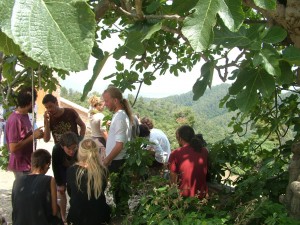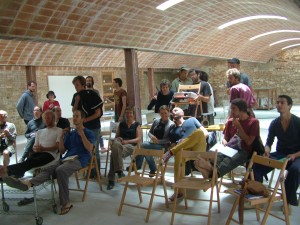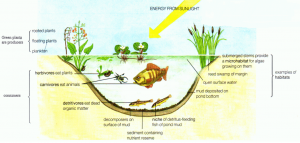We started the day speaking about disasters, which are extreme negative events that affect a whole community. Following the ethics, we should:
- save lives first, then property
- make full disaster plans
- use precautionary principle: if there may be a risk, it will certainly happen
Our design aims are:
- to reduce extent or intensity
- to endure or avoid
- to prepare for several disasters (2 most likely than one)
- to apply zones and sector planning
Any disaster can have natural or cultural causes, and is the trigger for a secondary disaster. Floods are a natural disaster, that can lead to epidemics. Hunger is a cultural disaster, that can lead to migration. Other disaster may be: fire, earthquake, nuclear, oil spill, economic,…
On our site, we should be prepared to face disasters. For this, we can select the 2 main ones likely to occur, and make a disaster profile:
- cause
- frequency (how often)
- predictability
- intensity
- time to onset (what kind of warnings)
- duration (how long it lasts)
- primary and secondary consequences
- scope of impact (range)
- destructive potential
- controllability (planning, how prepared we are)
Before any disaster, we should:
- decide who stays, who leaves (children, elderly people,…)
- emergency supply
- safe place
- escape routes
- hygiene
- teams (define tasks: who takes care of who)
During the disaster we should consider:
- food (dry food, nuts, carbohydrates)
- health (stay active, play)
- water
- warmth and light
- communication
After the disaster, we should be aware of:
- water filtering (boil during 10 minutes)
- children
- wash buildings before occupying them again
- house the most needy first
- total visibility of received aid
- rebuild to better withstand
We then had a session an aquaculture. The reasons to raise fish are proteins, biodiversity, biomass, water storage. Our aim is to restore and increase the fish stocks wherever possible.
It’s important to create good conditions before putting the fishes, therefore our pond should:
- be 2m deep in the middle
- have a pH 7-9
- have productive/edible water plants
- have refuges
- 1/3 of the pond should be covered by water cleaning plants
In the afternoon each group works in their design project for Valldaura Labs.



